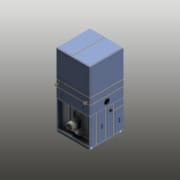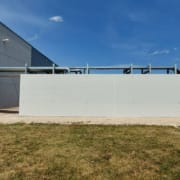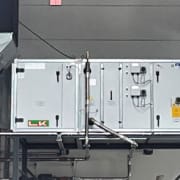Light liquid separator guide for 2024
Light liquid separators – Engineering for environmental protection: The invisible heroes in the fight against water pollution.
Basic principle of light liquid separators briefly explained
A light liquid separator is a special wastewater treatment system, usually in the form of a tank or container.
Water-polluting substances such as mineral oils or fuels are retained by floating and retaining the light liquid (oils, greases, lubricants, petrol, etc.) and separating them from the water phase.
Oils and other light liquids pose an enormous potential risk to water.
On the other hand, their specific physical properties offer the advantage that, unlike other substances, they can be separated from water using mechanical separation systems.
Observe density properties
The difference in density between the water phase and the light liquid (flotation) or the heavy phase (sedimentation) is decisive for the separator function. If the density of the substance to be separated is greater than the density of water (1 g/cm³), the substance sinks. Conversely, if the density is lower, the substance floats.
The separating effect of light liquid separators is based on the different specific weights of oils compared to water. The buoyancy forces cause the oil particles to rise at certain speeds. The particle diameter is included in these velocities in quadratic form, the difference in density in linear form (Stoke’s law). An oil particle is separated if the flow velocity of the oil/water mixture is less than the ascent velocity of an oil particle.
Areas of application for light liquid separators
Separator systems have a wide range of applications.
Separator systems for light liquids are mainly used in the following areas:
- Petrol stations
- Washing areas
- Parking lots
- Airports
- Car washes
- Workshops
- Scrap yards
- Industrial companies Metalworking
- Petrochemistry
- Electroplating
Components and function of a light liquid separator in detail
Components
Separator systems usually consist of
- a sedimentation device (also known as a sludge trap),
- the actual separator or separator room and
- a sampling device.
Functionality
- Contaminated wastewater is first settled in the sedimentation unit.
This allows the heavy phase to settle. - The lighter oil then floats to the surface of the water in the light liquid separator due to the difference in density.
- The final outlet into the sampling shaft is below the water surface so that only the clean water flows out.
In addition, separator systems usually have a float or a closure device that automatically closes the drain when the maximum storage volume has been reached. This ensures that no water-polluting substances enter the sewage system or watercourse.
Difference between class I/A and class II/B
A distinction is also made between
- Class I: Coalescence separatorAdditional physical separation through the coalescence effect
- Class II: Gravity / gasoline separators
Coalescence separators achieve significantly better separation, as they are able to retain even finely dispersed light liquids by means of a coalescence element at the outlet.
and installation of separator systems
- Above-ground installation
- underground installation (concrete compact unit or plastic) as well as special versions with
- Mobile version (wheelchair accessible, rollable, as a trailer solution)
- special upstream sludge trap (e.g. pointed floor)
- Coalescence level (class I or II) integrated
- Post-treatment stage e.g. with activated carbon filter, filtration, CP system
The advantage of above-ground installation is the simplified accessibility for installation, maintenance, general inspection and operation.
Legal regulations and DIN standards for light liquid separators
The legal regulations in the area of separator systems are understandably extremely complex. The following laws and legal standards are relevant:
- Water Resources Act
- Ordinance on Installations for Handling Substances Hazardous to Water
- State Water Act
- Municipal drainage statutes
- You can find out more from the responsible authority
The following DIN standards are also of interest for light liquid separators:
- DIN EN 858-1 + DIN EN 858-2 – Separator systems for light liquids (e.g. oil and petrol)
- DIN 1999-100 – Application regulations for separator systems for light liquids
The technical rules for water-polluting substances of the German Association for Water, Wastewater and Waste (DWA) must also be observed:
Maintenance of separator systems
Light liquid separators should be serviced at regular intervals.
Semi-annual maintenance is required in accordance with DIN 1999-100/101.
In addition, a monthly inspection is strongly recommended.
The cleaning of the coalescence insert (if present) should also be included in the self-checks carried out.
Further details can be found in our guide on maintenance and general inspection.













